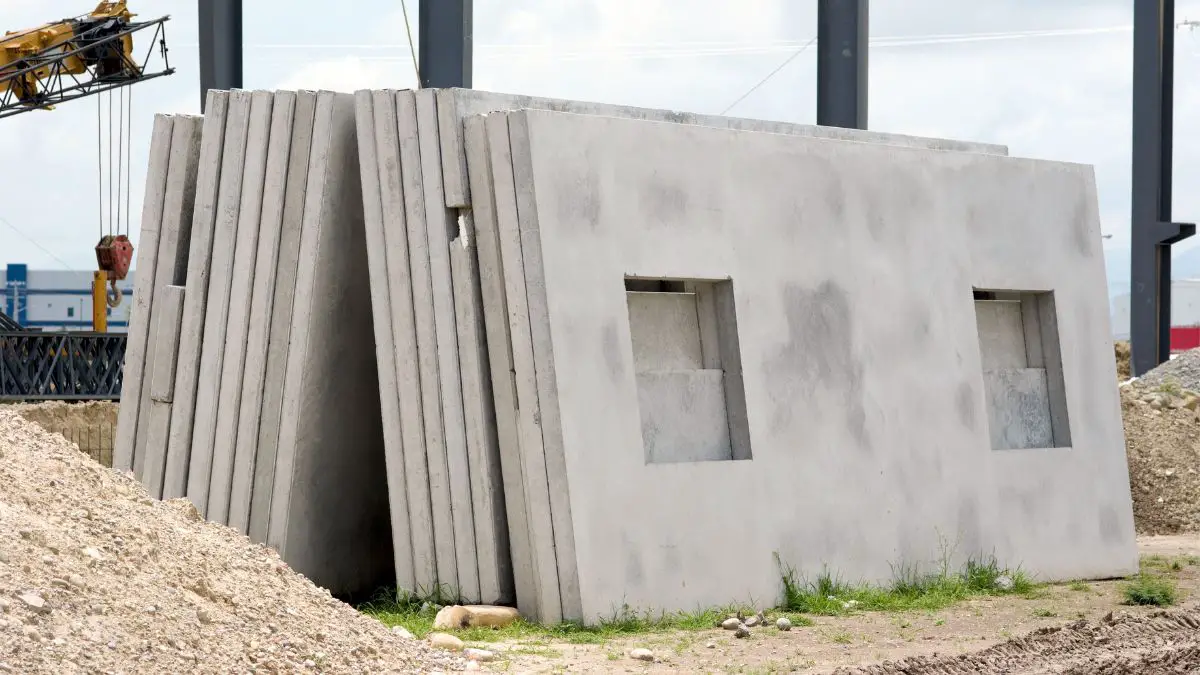Are you considering basement wall options for your home? If so, you may have come across the terms precast basement walls and poured walls. However, knowing which option is best can be difficult without understanding their differences.
In this blog post, we’ll look at the advantages and disadvantages of both precast basement walls and poured concrete walls and compare the cost of each system so you can make an informed decision. We’ll also provide questions when choosing between precast and poured walls for your basement.
Precast Basement Walls vs. Poured Basement Walls
Precast basement walls are factory-made concrete blocks delivered to the job site, then lifted into place and stacked to form the walls. Precast blocks come in various shapes and sizes, so it’s easy to create an aesthetically pleasing wall design that can be tailored to fit any project.
Precast basement walls offer several advantages for homeowners, including their durability, fire and water resistance, and fast installation. They also provide a great insulation value that can help lower energy costs.
Poured concrete basement walls are created by pouring wet concrete into forms on-site and then allowing it to set. Poured walls also have several advantages, such as their seamless design, which eliminates the need for mortar, and their strength.
Poured walls can also be customized to fit any space, making them a great option for homeowners who want an interior design that is unique to their home.
Precast Walls at a Glance
Advantages
Precast basement walls are an excellent option for homeowners who are pressed for time. They can be installed quickly and easily, which makes them ideal for projects with tight timelines or budget constraints. Additionally, precast walls have excellent fire and water resistance, making them a perfect choice for areas with high moisture levels or severe weather.
Disadvantages
The main disadvantage of precast basement walls is their cost. Because they are already complete and require minimal installation labor, they tend to be more expensive than poured concrete walls. Also, precast blocks come in limited shapes and sizes, so getting a customized look for your project may take time and effort.
Cost Comparison
The cost of precast basement walls will depend on the type of block used, as well as the size and shape of the wall. Generally speaking, precast walls can range anywhere from $25 to $100 per square foot installed.
Poured Walls at a Glance
Advantages
Poured walls offer a higher level of customization than precast walls. They can be thicker or thinner and can also be formed with curves or other unique shapes to create an eye-catching look. Additionally, poured concrete provides a strong foundation less likely to suffer from cracking or shifting over time.
Disadvantages
The primary disadvantage of poured walls is that they require more installation time. It takes several days for the concrete to be appropriately set, and weather conditions can affect the installation process. Additionally, pouring a wall requires more labor than installing precast blocks, which will add to your project’s overall cost.
Cost Comparison
Poured basement walls can range from $20 to $60 per square foot installed, depending on the size of the wall and any additional features such as curves or steps.
Which Option Should You Go With?
Choosing between precast and poured basement walls is a big decision. There are several factors to consider when deciding which option is best for your project. Here are some questions you should ask yourself before making a final decision:
- How quickly do I need the wall to be installed?
- Am I looking for something customizable or something more basic?
- What is my budget for this project?
- What type of insulation do I need in my basement walls?
- Does the wall need to be strong enough to support a large load?
Final Thoughts
When considering precast and poured concrete walls for your basement, it is essential to consider all factors, including cost, durability, and aesthetics. If you have a tight budget and timeline, precast walls may be the way to go. However, if you’re looking for something more customizable and want to spend a bit extra, poured walls are the better option. Additionally, be sure to ask questions about the installation process and any warranties that may be available.

